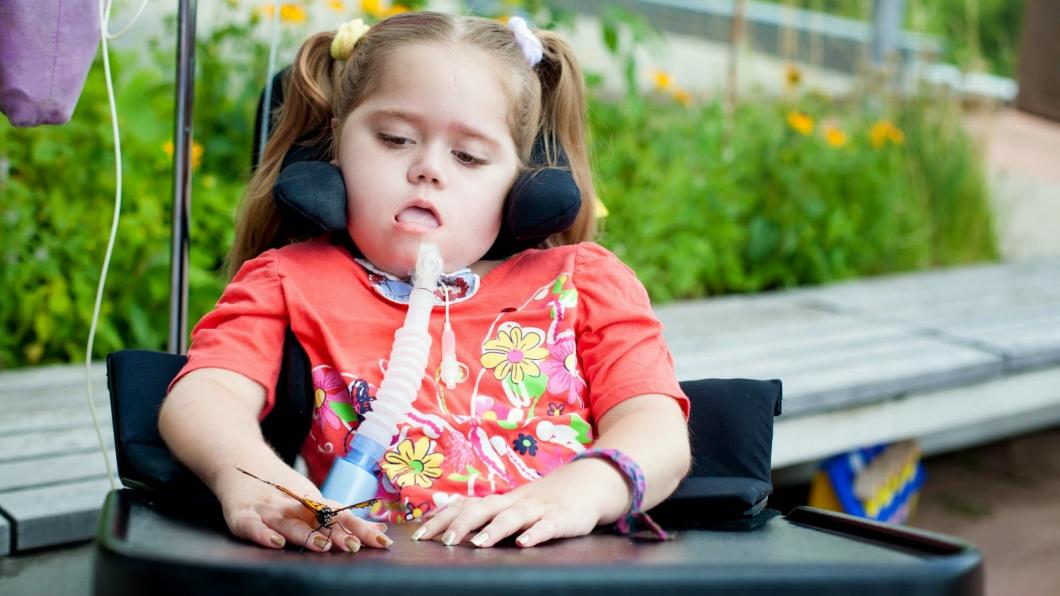
Mia meets a butterfly
By Louise Kinross
Mia Pruder’s sparkly-gold nails clicked excitedly on her wheelchair tray.
The seven-year-old was in her hospital room at Holland Bloorview and a large, clear canister with a newly-hatched monarch butterfly was placed on her tray. It perched, with its brilliant orange wings tipped with white dots and marked with black veins, on the side of the container.
Several green chrysalides hung from the mesh lid, each with a strip of tiny gold beads on its case that looked as decorative as Mia's nails. At the bottom, a caterpillar striped black, white and yellow was crawling over a leaf.
Mia, who has an auto-immune disease and suffered a stroke following a surgery, eyed the suspended green shells intently.
The travelling canister is home to eggs, caterpillars, chrysalides and butterflies that intrigue child audiences within the walls of the rehab hospital.
“Children may not have the opportunity to get out of the hospital so it's great to bring nature indoors,” explains Effie Biliris, a youth facilitator who co-ordinates the Blooming Butterflies Program at Holland Bloorview.
“We use monarchs because their transformation is so visible,” says Robyn Sanford, coordinator of participation and inclusion at Holland Bloorview. “Every stage is distinct and the kids can see what's happening.”
The monarchs are ideal for use in a hospital because they pose no infection risk, are silent, require little care and don't disrupt patient care.
In addition to observing the creatures and learning about their care, children participate in related activities like making butterfly masks or butterfly cut-outs.
The caterpillar's metamorphosis into a shell, called a chrysalis, is so unusual a process that even Effie says “no words can describe it. The caterpillar's skin opens up and it goes inside. It then spins a web on the mesh at the top of the canister to hold itself upside down in a J-shape. When they shed their last skin, they wiggle and the skin coils up and falls off.”
Within 24-hours of emerging, the monarch butterflies at Holland Bloorview are released back into nature.
Mia was pushed in her wheelchair out onto a terrace where a butterfly was placed on the back of her hand. It waved its wings majestically, tickling her skin. She was told to make a wish and the butterfly, named Molly after her beloved pink cat blanket, flew away. The girl who loves pink and purple understands everything, her mother Heather says, but her stroke has taken her speech.
The butterflies are also released in the ravine behind the hospital in Spiral Garden, Holland Bloorview’s outdoor integrated arts camp. These ceremonies takeplace in Butterfly Garden, which is dedicated to the memory of Jamie Burnett, a beloved therapeutic clown who created his own magic for our inpatients before dying of a brain tumour in 2011.
The Blooming Butterflies Program is funded by the Norman and Marion Robertson Charitable Foundation and based on How To Raise Monarch Butterflies: A Step-by Step Guide for Kids by educator and photographer Carol Pasternak. Carol taught Holland Bloorview staff how to care for the butterflies and release them with the help of clients. She raises Monarch butterflies with her family in Toronto.
Photos by William Suarez
